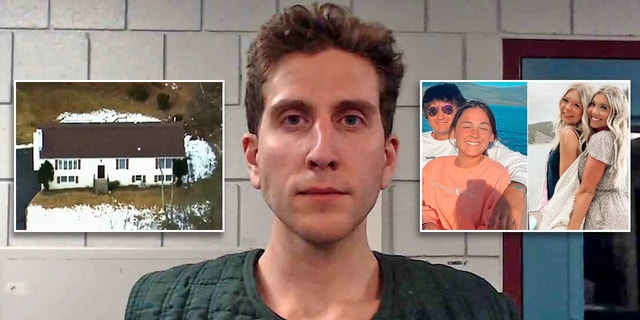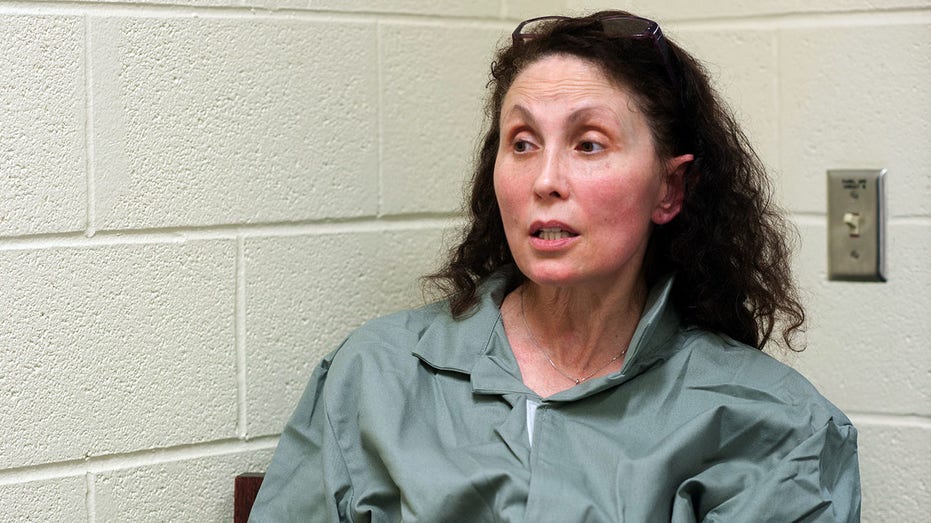The Intercept
Joe Berlinger couldn’t believe what he was reading. The veteran documentary filmmaker was going through a brief written by the Oklahoma Attorney General’s Office urging the state’s Pardon and Parole Board to deny Richard Glossip clemency in an upcoming hearing. Berlinger expected the brief to focus on the grave questions looming over Glossip’s conviction and death sentence. Instead, he found himself reading a lengthy critique of his own work. The idea that he would even be mentioned “kind of blew my mind,” Berlinger said.
Glossip had twice been tried and sentenced to death for the 1997 murder of Barry Van Treese inside Room 102 of a seedy Best Budget Inn that Van Treese owned on the outskirts of Oklahoma City. No physical evidence linked Glossip, the motel’s live-in manager, to the crime. Instead, the case against him was built almost exclusively on the testimony of a 19-year-old maintenance man named Justin Sneed, who admitted to carrying out the killing but said it was all Glossip’s idea. Glossip has steadfastly maintained his innocence.
Over his 30-year career, Berlinger has received widespread acclaim for his work, including on wrongful convictions. When his four-part series “Killing Richard Glossip” was released in 2017, it quickly raised the profile of Glossip’s case. Inspired by The Intercept’s reporting, Berlinger’s series delved into the myriad issues that have plagued Glossip’s conviction and revealed startling new evidence that undercut the state’s theory of the crime.
In his brief to the parole board, Oklahoma Attorney General John O’Connor sidestepped the problems with the state’s case and instead attacked those who would call it into question, including Berlinger. “I took it as desperation on the AG’s part,” Berlinger told The Intercept. “It’s unbelievable that they would go to such lengths to discredit a documentary.”
“What other facts have been selectively cherry-picked by the state?”
Over nearly five pages, the AG’s office poked at alleged factual inaccuracies in Berlinger’s series that it deemed “somewhat minor” — allegations Berlinger calls specious — before taking a broad swipe at the documentary as being deliberately slanted in Glossip’s favor. Berlinger said he wasn’t troubled by the fact that the AG attacked his work so much as how he did it.
“It is a documentary hoping to bend the truth in order to convey Glossip’s side as possessing both a legal and moral superiority,” the AG wrote. “Indeed, Berlinger has even acknowledged as much in his other work.” For this proposition, the AG cited a 2021 Irish Times article, claiming that “Berlinger noted that his work ‘allows [him] to play with the nature of truth. Because we live in this post-truth society.’”
But that’s not what Berlinger told the Irish Times.
The filmmaker was talking about a different documentary series — focused on internet sleuths trying to solve what they believed was a murder — that illuminated the dangers of ignoring facts in favor of conjecture.
To make it sound like Berlinger was also talking about the Glossip case, the AG’s office left out the first part of his quote — it was “the series,” Berlinger said, that allowed him to “play with the nature of truth” — and then omitted the following sentence: “I’ve spent a lot of my time doing wrongful conviction cases and being involved at the criminal justice system where circumstantial evidence has led to tragic results. This case shows how, despite all the evidence, people can be so convinced of their own beliefs.”
For Berlinger, the mischaracterization was infuriating and unnerving. “They changed one word, which makes all the difference in the world, and left out the next consecutive sentence, which really changes the whole meaning of things,” he said. If they would do something so brazen and easily disproved to him, what might they do to Glossip?
Berlinger decided to write a letter to the parole board. “If facts are so selectively presented by the state in their clemency brief about one filmmaker’s work,” he wrote, “you must ask yourselves, what other facts have been selectively cherry-picked by the state to tell a convincing but false narrative in Richard Glossip’s case?”
Richard Glossip gives an interview from Oklahoma’s death row in the 2017 documentary “Killing Richard Glossip.”
Still: Courtesy of Joe Berlinger
Willful Blindness
Nearly 25 years after he was first accused of plotting his boss’s brutal murder, Glossip is approaching his eighth scheduled execution date in early 2023. On February 16, if Oklahoma finally gets its way, Glossip will be executed by lethal injection at the state penitentiary in McAlester, one week after his 60th birthday.
Yet the evidence pointing to Glossip’s wrongful conviction has only grown stronger over time. His most recent execution date was put on hold by Gov. Kevin Stitt, who granted a stay of execution to allow the Oklahoma Court of Criminal Appeals to consider filings from Glossip’s defense team, which asked the court to hear new evidence in the case. Among the most recent revelations are handwritten letters from Sneed that showed a desire to take back his story about being coerced to kill Van Treese — a narrative that provided the basis for the state’s entire case against Glossip.
The courts have routinely brushed aside such discoveries. With Glossip’s execution date looming, his clemency hearing — tentatively set to take place later this month — may be the last chance for authorities to spare the life of a man whose case has become emblematic of the profound problems with Oklahoma’s death penalty system and capital punishment as a whole. “We now know what really happened — both how the crime was actually committed and how an innocent man got sent to death row,” Glossip’s attorneys argue in their clemency application. Yet prosecutors have continued to insist that their client should die, they write, “without regard to recent developments because two juries found him guilty and sentenced him to death. That is willful blindness.”
Sneed’s version of events was dubious from the start, the product of a coercive interrogation in which homicide detectives repeatedly emphasized their belief that Glossip was involved. Beginning with his confession to police and continuing through each of Glossip’s two trials, where he was the star witness, Sneed couldn’t seem to keep his details straight — not about what led up to the crime, what happened inside Room 102, or who did what after the fact to try to cover it all up. Sneed said Glossip promised to pay him thousands of dollars to kill Van Treese, but the exact amount changed over time.
According to the state, not long before he was murdered, Van Treese discovered that Glossip had been embezzling from the nearly all-cash operation while letting the ratty motel slide into disrepair; he was planning to fire Glossip. The state has argued that in an effort to keep his job, Glossip hatched a plan to kill Van Treese and take over motel operations.
Although Glossip has always maintained that this is preposterous — “I wouldn’t hurt nobody for a job,” he said on the stand in 1998 — he did himself no favors in the immediate aftermath of Van Treese’s murder. When he was first interviewed by police, he failed to tell them about a chilling exchange he says he had with Sneed in the early morning hours of January 7, 1997. Sneed had banged on the wall of Glossip’s apartment at the motel, waking him up; when Glossip opened the door, Sneed told him that a couple of drunks had broken a window — and that he’d killed their boss, Van Treese. Glossip insists that he thought Sneed was joking. But he withheld the information long enough to give people reason to believe he was covering for Sneed. By the time Glossip went to trial, he’d been cast as a sinister puppet master who brainwashed Sneed into committing murder.
For more than two decades, the state has insisted that Sneed was a meek dolt who was powerless to resist Glossip, despite the fact that it was Sneed alone who carried out the bloody attack. Meanwhile, a host of new witnesses have come forward with information disputing the state’s narrative. Residents of the Best Budget Inn said that Sneed was conniving, violent, and often resorted to theft to fund his drug addiction. Men who were incarcerated with Sneed say he boasted about falsely implicating Glossip to avoid facing the death penalty.
One man who spent time with Sneed in the Oklahoma County Jail told Berlinger that Sneed said he and a woman had lured Van Treese into Room 102 to rob him. One of the lead detectives on the case, Bob Bemo, told Berlinger that he doubted Sneed ever meant to kill Van Treese. “He ended up killing Barry. … I don’t know that he intended to, but he did,” Bemo said. “He beat him pretty good.” At one point during his interrogation, Sneed also told the cops that he only meant to incapacitate Van Treese. “I just really meant just to knock him out,” he said. In other words, even Sneed has intimated that the crime was a robbery gone wrong and not a murder for hire.
In 2021, a group of mostly conservative, pro-death penalty Oklahoma state lawmakers asked the governor and the Pardon and Parole Board to conduct an independent investigation into Glossip’s conviction. Neither Stitt nor the board members (the majority of whom are appointed by Stitt) obliged, so in early 2022, the lawmakers sought the help of the law firm Reed Smith LLP, which launched a pro bono, four-month investigation.
“There are a lot of things right now that are eating at me. Some things I need to clean up.”
A team of attorneys and investigators reviewed more than 12,000 documents and interviewed dozens of witnesses. The result was a bombshell 343-page report that took issue with nearly every aspect of the state’s case against Glossip. Among the revelations: A box of financial records, potentially key to determining if any money was missing from the motel, was destroyed while Glossip’s first conviction was on appeal. By the time he was retried, the evidence was gone. In marking the evidence for destruction, the DA’s office falsely claimed that Glossip’s appeals had been exhausted; oddly, the box was also assigned a new case number, a move that would effectively hide it from anyone searching for the evidence.
Since then, the firm has released additional startling information, including that Sneed considered taking back his story about Glossip. In 2003, a year before Glossip was retried, Sneed wrote to his public defender, Gina Walker, asking, “Do I have the choice of re-canting my testimony at any time during my life, or anything like that.” In 2007, he again reached out to Walker. “There are a lot of things right now that are eating at me,” he wrote. “Some things I need to clean up.” In response, Walker, who has since died, discouraged Sneed from recanting, writing that if he hadn’t testified, he likely would have ended up on death row.
Reed Smith also found evidence that Assistant District Attorney Connie Smothermon worked with Walker during Glossip’s second trial to modify Sneed’s testimony to fit the medical examiner’s finding that Van Treese had puncture wounds to his chest. Although there was a knife found at the scene, at the first trial Sneed denied attacking Van Treese with a knife. At the retrial, Sneed testified for the first time that he had stabbed Van Treese.
Sneed has not responded to The Intercept’s request for an interview.
GOP state Rep. Kevin McDugle, one of the driving forces behind the lawmakers’ efforts to halt Glossip’s execution, is a stalwart supporter of capital punishment. But he is certain that Glossip is innocent. “If we put Richard Glossip to death, I will fight in this state to abolish the death penalty,” McDugle said.
Don Knight, Richard Glossip’s lead attorney, in the 2017 documentary “Killing Richard Glossip.”
Still: Courtesy of Joe Berlinger
An Insider’s Game
Where McDugle and others are clearly concerned about the integrity of the case against Glossip, the Oklahoma attorney general and five members of the state’s Court of Criminal Appeals remain unmoved.
In the wake of the Reed Smith reports, Glossip’s pro bono defense team, led by attorney Don Knight, filed two additional appeals to the court raising questions about the veracity of the case, asking for an evidentiary hearing, and arguing that Glossip is innocent. The lengthy filings laid out evidence that Glossip’s conviction was plagued by an inadequate police investigation as well as prosecutorial misconduct. The lawyers cried foul over the police destruction of evidence, Smothermon’s plotting with Walker to change Sneed’s testimony, and the failure to turn over Sneed’s ruminations regarding recantation.
In response, O’Connor, the attorney general, suggested that the destruction of evidence was just an honest misunderstanding. The letters Sneed wrote to Walker, meanwhile, only “establish that Sneed feels guilty about petitioner’s fate, possibly because of outside pressure.” In a second filing, O’Connor announced that Sneed had “never discussed recanting, in the legal sense.” (It was unfair, he noted, to assume that Sneed would understand the meaning of the word “recant.”)
The communication between Smothermon and Walker regarding Sneed’s testimony was no big deal, according to the AG, who argued that Sneed’s testimony wasn’t even inconsistent: Sneed first said that he didn’t stab Van Treese and during the second trial said only that he “tried to” stab Van Treese; since the knife didn’t fully penetrate the skin, the two statements weren’t in conflict, the AG wrote.
As for Glossip’s innocence claim, O’Connor argued that none of his evidence was credible and Glossip simply wanted to be spared the death penalty. “Were petitioner innocent, he should not wish to stay in prison,” he wrote. “Instead, he appears to have been slowly gathering evidence to use when his next execution date was set.” The AG argued that this approach was “completely inconsistent” with a claim of innocence.
In two separate opinions, the Court of Criminal Appeals rejected Glossip’s innocence claim and embraced the state’s arguments — including the assertion that Sneed never expressed a desire to recant.
Asked about the AG’s briefs, Knight, Glossip’s lead attorney, sighed. “I would say that they knew the audience that they were writing to,” he said. “They knew what they needed to say to the five judges on the Court of Criminal Appeals to give those five judges enough for them to write the terrible decisions that they wrote. It was like an insider’s game.”
“I just can’t imagine any person looking at me straight in the face and saying, ‘Oh, yeah, this is fine.’”
Mostly, Knight is frustrated. He’s spent the last seven years digging into Glossip’s case. And every new revelation brings him back to a central point: The police failed to conduct a thorough investigation into Van Treese’s murder. They never formally interviewed Van Treese’s widow, Donna, for example, and it took nearly a week for them to locate and interview Sneed. They didn’t preserve or interrogate financial documents related to the motel’s operations — so there’s no clear proof that any money was missing from the Oklahoma City property, let alone that Glossip was stealing. Not only was a box of financial records destroyed by the state before Glossip’s second trial, but inexplicably, the police also returned additional records to the Van Treese family shortly after the crime.
Knight has repeatedly written to the Oklahoma County District Attorney’s Office asking for access to records that might provide answers. He has never received a response. “I’ve always just wanted to know what happened here,” Knight said.
Knight also sent a lengthy letter to O’Connor, laying out what detectives did and didn’t do and asking a basic question: Is this enough to support a capital murder conviction? Knight said he’s convinced that Glossip is innocent, but the point of the correspondence wasn’t to harp on that. Instead, he wanted to know if the state was truly satisfied with the murder investigation. “It seems to me that we ought to be able to agree on whether what these cops did was enough or not. … I just can’t imagine any person looking at me straight in the face and saying, ‘Oh, yeah, this is fine,’” he said. “And when you admit that this isn’t enough, the next question becomes, well, what do you do about it now?”
An aerial view of the Oklahoma County Courthouse in 2017 from the documentary “Killing Richard Glossip.”
Still: Courtesy of Joe Berlinger
Intimidation Tactics
The Oklahoma Pardon and Parole Board does not usually spare the lives of people facing execution. Although its votes are merely recommendations to the governor, who has the last word, on the rare occasions when the board has called for clemency, the decisions have often been mired in controversy. After board members voted in 2021 to spare the life of Julius Jones — a Black man convicted by a nearly all-white jury who insisted he was innocent — Oklahoma legislators tried to pass a law that would forbid the board from considering innocence claims at clemency hearings for the condemned.
Few politicians have tried to wield power against the board like outgoing Oklahoma County District Attorney David Prater. In 2013, the year before Glossip first applied for clemency, Prater accused the board of violating the state’s Open Meeting Act by keeping a “secret” parole docket and improperly granting early release to people in prison. When the board members refused to resign, he had them arrested on criminal charges, which he dropped the following year. As Oklahoma tried to execute Glossip in 2015, Prater used similar intimidation tactics to try to silence witnesses who came forward. More recently, Prater targeted two board members whom he accused of anti-death penalty bias. As Prater embarked on his final year as DA in early 2022, both members resigned their positions.
Although Prater’s departure from office may give Glossip some reason for optimism, his chances before the board remain fraught with uncertainty. All five current board members will see their terms expire on January 8, at which point at least some will be replaced by new members chosen by the governor. Because a clemency hearing must take place no less than 21 days before a scheduled execution, even those appointed immediately will have little time to acquaint themselves with their new role, let alone the voluminous records in Glossip’s case, prior to his February 16 execution date.
When Glossip last went before the board in October 2014, his case had not yet reached national prominence. Rather than make a vociferous argument for their client’s innocence, his lawyers emphasized the weakness of his conviction. At most, they said, the evidence showed that Glossip was guilty of helping Sneed cover up the murder. They urged the board to consider whether they had “any doubt” as to Sneed’s version of events. “This case is entirely circumstantial except for Justin Sneed’s testimony,” Glossip’s lawyer Kathleen Lord said.
Prosecutors pushed back on the notion that this was a “one-witness case.” They pointed to the single piece of incriminating evidence that has haunted Glossip the most: his failure to tell Oklahoma City police what he knew when they first questioned him. Asked why he wasn’t forthcoming, Glossip repeated what he has told others over the years: “At first I didn’t believe [Sneed] did what he said he did.”
Several members of Van Treese’s family attended the 2014 hearing, including his widow, Donna, who held up a family photo taken a year before her husband’s death. Her voice trembling with emotion, she described how the murder had upended the lives of her children. She reminded the board of something she’d said on the stand at both trials: that Glossip had lied to her too. On January 7, before Van Treese’s body was found, she called Glossip on the phone. He reassured her that things were fine — and that Van Treese had simply gone to the hardware store to get supplies.
Glossip has always insisted that his statements about when he last saw Van Treese were misconstrued. While Donna Van Treese and others said Glossip claimed to have seen him leaving the motel around 7 a.m. on January 7, Glossip said he meant 7 p.m. the night before. Under questioning from a board member at the 2014 clemency hearing, Glossip said he did not remember saying Van Treese had gone to the hardware store.
All five board members voted to deny clemency.
The state’s new clemency brief was filed this summer. The 175-page document adheres closely to what was presented by the attorney general’s office in 2014. It again emphasizes Glossip’s failure to tell the police what he knew, while leaning heavily on witnesses who questioned his behavior after the crime. It doubles down on the notion that Sneed was a wide-eyed simpleton devoid of free will, ignoring those who have come forward over the years to debunk the state’s depiction.
Prosecutors described Sneed as a “Rottweiler puppy” and Glossip as the “dog trainer.”
The state’s portrayal of Sneed has always been exaggerated on its face. At Glossip’s 2004 retrial, prosecutors described Sneed as a “Rottweiler puppy” and Glossip as the “dog trainer.” In the latest clemency brief, the attorney general’s effort to paint Sneed as “childlike” verges on the absurd, casting him as so guileless and dependent that his emotions rise and fall dramatically with Glossip’s every move. The same office that has repeatedly weaponized the graphic crime scene photos from Room 102 also manages to downplay Sneed’s violent attack to the point where Van Treese almost comes across as the aggressor — defending himself until Sneed is “able to fight back” and “ultimately able to subdue him with blows from the bat.”
Members of the Van Treese family did not respond to emails about Glossip’s case. According to the attorney general’s office, which resubmitted the family’s 2014 letters to the board, relatives have chosen not to be involved in the clemency hearing this time around.
Of the few things that are new in the state’s clemency brief, none of them have much to do with whether Glossip orchestrated Van Treese’s murder in 1997. To portray Glossip as a con man whose manipulative behavior continues to this day, the attorney general included letters from women who previously supported him but have had a change of heart.
In one affidavit, his ex-wife, who is less than half his age, described how she began a relationship with Glossip after seeing Berlinger’s documentary. “At first, I gave him small amounts of money, then it rapidly grew to higher amounts of money as the relationship progressed,” she wrote. Over time, she said, he would “throw temper tantrums” or threaten to hurt himself if she did not do what he wanted. After they divorced, she concluded he was using her. Another woman, who was not romantically involved with Glossip but also gave him money, wrote that she no longer believes he is innocent. Neither woman said explicitly that they wish Glossip to be executed. Nor did they respond to emails or phone calls from The Intercept.
Of course, Glossip, who has since remarried, does not face execution for mistreating his partner or taking financial advantage of people from his death row cell. Nor do the affidavits suggest he poses a danger to society — something even his second jury failed to find in 2004. Glossip’s prison record shows no signs of violence toward the people who live and work around him. As his clemency petition reminds the board, “Glossip had no prior criminal record and has been a model prisoner for over 25 years.”
For Berlinger’s part, he says he debated whether he should write a letter to the board at all. “Will it matter?” he asked himself. This wasn’t about him, after all. He was just a “grain of sand on the beach” of this complex case, yet the state had decided to focus disproportionate attention on him in a way that was flatly dishonest. That’s what convinced him to write the letter. “I wanted the clemency board to understand that if they did it to me, wouldn’t this be their whole approach to things?”
The post Facing His Eighth Execution Date, Richard Glossip Asks for Clemency appeared first on The Intercept.
Justice
















